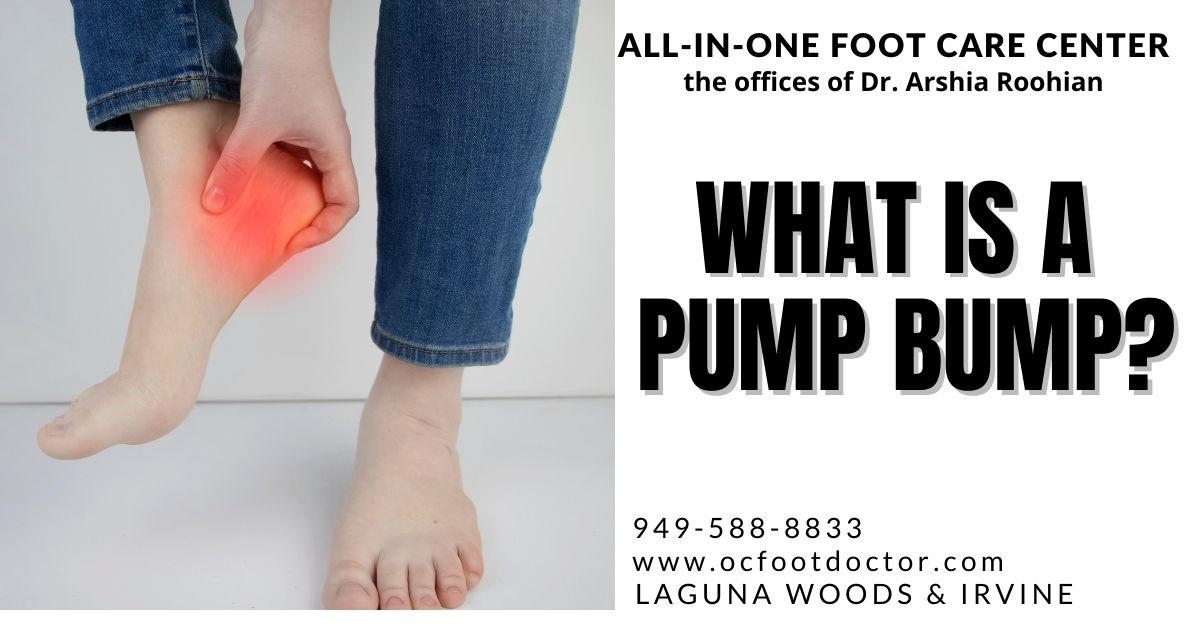What is a Pump Bump?

Haglund's Deformity is referred to as “Pump Bump.” The “bump” refers to a bump that forms where the Achilles tendon and the heel bone (calcaneus) attach on your heel. Getting in contact with shoes irritates the soft tissue near this raised area, leading to bursitis (a painful inflammation).
How Does Pump Bump Get Its Name?
According to this theory, women's pump-style high heels were responsible for these bony enlargements because of the pump-style heel's height.
What Do You Think About That?
As it was first described in 1927, the condition was idiopathic, meaning its cause was unclear. Haglund’s Deformity is caused by a variety of factors, including shoes. However, high heels are not the only factor that contributes to Haglund’s Deformity. Anyone can suffer from Haglund’s Deformity.
Then, What Is The Cause Of Haglund's Deformity?
There are a number of factors that contribute to Haglund's deformity, including:
- It is characterized by an outward sloped heel bone.
- Walking on the balls of the feet (supination).
- Inflammation of the Achilles tendon.
- Structure with a high arch at the foot.
- A rigid back is the most common feature in a shoe or boot (dress shoes, work boots, ice skates, etc.).
What Is The Haglund Deformity And How Would I Identify It?
You may see or experience these symptoms if you have Haglund's deformity:
- On the heel, there is a bump.
- The heel is swollen.
- Inflammation in the vicinity of the redness.
- Heels rubbing against shoes may develop calluses or blisters.
- It is particularly painful when walking when the Achilles tendon connects to the heel.
Is Haglund's Deformity Treatable By Podiatry?
Deformities may not be dangerous, but they can be painful or cause other conditions and injuries, such as bursitis (painful inflammation), calluses, and blisters. Condition treatment is required if they cause pain and walking problems.
What Is The Procedure For Diagnosing My Foot Problem?
By looking at your heel and discussing any contributing risk factors, your doctors are able to diagnose Haglund's deformity. A diagnostic test like an X-ray or MRI can help your doctor and you decide which treatment option may be best. These tests can help determine the shape of the heel bone and the severity of the condition.
Haglund's Deformity: How Is It Treated?
Treatment for Haglund's deformity improves quality of life while relieving pain and altering the foot's underlying structure. Some non-surgical options include:
- Changing your shoes or making modifications to them.
- In order to avoid friction, shoes have heel lifts that help raise the heel.
- Heel pads inside the backs of shoes to help reduce irritation.
- People with high arches should wear footwear arch supports.
- Drugs that reduce inflammation, such as ibuprofen.
- Inflammation and pain can be relieved by applying ice to the heel.
- A tight Achilles tendon can be alleviated by stretching exercises.
- The condition can be aggravated by certain activities.
- To prevent rubbing on the heel bone, wear a soft cast or walking boot.
- The benefits of physical therapy.
Is Surgery Necessary For Me?
Surgical treatment is needed when non-surgical treatments do not relieve symptoms. Surgery involves removing the portion of the heel bone sticking out from the heel bone, as well as repairing the Achilles tendon if it is damaged. Haglund's deformity severity, the individual's health history, and lifestyle are factors that determine what type of procedure will be used.
Haglund's Deformity: How Can I Prevent It?
While it is impossible for everyone to avoid Haglund's deformity, there are several ways to reduce the chance of developing it:
- Open-backed shoes or flexible shoes with a soft back.
- Preventing injuries to the calves, Achillestendons, and feet by stretching correctly before and after exercise.
- Making sure you wear footwear that provides adequate arch support (if you have high arches).
- Running can cause overuse injuries if you don't gradually introduce strenuous exercises to your routine.
- When you have heel pain, you should see a doctor right away.
Can Haglund's Deformity Be Treated With Surgery?
In the event of Haglund's Deformity being left untreated, it may get worse over time. Talk to your doctors right away if you are feeling heel pain or seeing a hard bump on your heel. Foot pain should never be ignored. For your body to return to normal function as quickly as possible, you need to seek treatment from a health professional.
You can contact our office at 949-588-8833, or visit our website at https://www.ocfootdoctor.com. Our offices are in Laguna Hills, Irvine, Mission Viejo, Aliso Viejo, Lake Forest, Foothill Ranch, and Costa Mesa.
📲 949-588-8833
🏢 24331 El Toro Rd, Suite 370 Laguna Woods CA 92637
🏢Irvine Medical Arts Building 113 Waterworks Way, Suite 250 Irvine, CA 92618
🌐 https://www.ocfootdoctor.com/
The information contained above is intended for general reference purposes only. It is not a substitute for professional medical advice or a medical exam. Always seek the advice of your physician or other qualified health professionals before starting any new treatment. Health information on this website MUST NOT be used to diagnose, treat, cure or prevent any disease without the supervision of your doctor.


